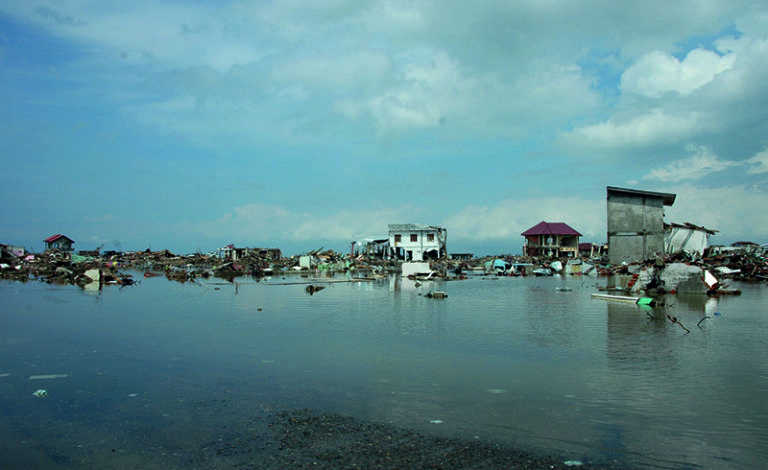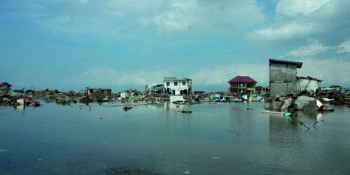More than 170 countries have national policies on adaptation to manage the risks of climate change impacts


More than 170 countries have now introduced national policies and laws on climate change adaptation to address impacts including the rising risks of extreme events such as floods and droughts, according to a global analysis published today (Monday 9 December 2019) by the Grantham Research Institute on Climate Change and the Environment at the London School of Economics and Political Science.
The study by Dr Michal Nachmany, Dr Swenja Surminski and Rebecca Byrnes identified 658 national laws and policies on adaptation, many of which explicitly acknowledge the potential risks caused by shifts in extreme weather events.
The report states: “Adaptation to the impacts of climate change has typically received less attention than emissions reduction (mitigation) in the international climate negotiations and global policy discourse. However, with impacts of climate change already being experienced, recognition of the urgent need for adaptation is growing.”
It adds: “While much adaptation activity occurs at the local level, national governments play a vital role in overseeing, mandating and allocating resources to local adaptation activities”.
The analysis was drawn from the ‘Climate Change Laws of the World’ collection of 1811 national climate laws and policies, which has been launched today as an updated database with improved access for policy-makers and researchers. The report will be presented at an official side event on ‘Global trends in climate legislation and litigation: enhancing resilience and adaptation’ which is being co-hosted today (9 December 2019) by the Grantham Research Institute at the United Nations climate change summit (COP25) in Madrid, Spain.
The study found:
- 91 countries have at least one law (passed by a legislative branch, e.g. parliament) that addresses climate change adaptation.
- Adaptation is now addressed in the executive policies of at least 170 countries.
- More than 120 countries have at least one framework document that addresses climate change adaptation (laws or policies that lay down the overarching and cross-sectoral obligations and principles, but often have more detailed subsidiary laws or policies that set out how these goals are achieved).
The analysis also found that most adaptation laws and policies came into force between 2009 and 2016, with 85 countries passing a total of 133 adaptation laws and policies in 2012-13. The authors point out that most countries had introduced laws or policies on adaptation after legislative action on greenhouse gas emissions.
The authors note that while many of the national laws and policies included in their analysis explicitly address climate change adaptation, it is challenging to identify all relevant measures because, for instance, they overlap with disaster risk reduction and sustainable development. They warn, therefore, that their study may not capture countries’ full legislative and policy response to adaptation.
The authors carried out a more detailed analysis of the adaptation framework laws and policies of 100 countries and found that for 80 per cent of the countries floods and droughts are explicitly mentioned. Wildfires, heatwaves and mudslides or landslides are mentioned by only half of the 100 countries, while slow-onset impacts like soil erosion are mentioned by 60 per cent. Ocean acidification, which has adverse effects on economies that are particularly dependent on the oceans, is acknowledged by less than 10 per cent of the 100 countries.
The report states: “Many framework laws and policies explicitly address the physical hazards they respond to. These include both extreme weather events, e.g. floods, droughts, storms and heatwaves, and slow-onset impacts such as sea level rise and ocean acidification.”
It adds: “The importance of identifying specific hazards is twofold. First, it focuses the design of the specific measures to respond to these hazards e.g. incorporating sea level rise considerations into spatial planning. Second, it provides guidance to ministries and sub-national governments on where to prioritise their adaptation efforts.”
The analysis also revealed that the framework laws in half of the 100 countries explicitly delegate some responsibility for managing adaptation to local governments. The report states: “This aligns with the local nature of climate impacts and adaptation action”.
For a copy of ‘National laws and policies on climate change adaptation: a global review’ and more information about this media release, please contact Bob Ward on +44 (0) 7811 320346 or r.e.ward@lse.ac.uk
-ENDS-
- The Grantham Research Institute on Climate Change and the Environment (https://www.lse.ac.uk/grantham) was launched at the London School of Economics and Political Science in October 2008. Its major funder is The Grantham Foundation for the Protection of the Environment (https://www.granthamfoundation.org/).
- The Climate Change Laws of the World website can be accessed at: https://www.climate-laws.org/.

